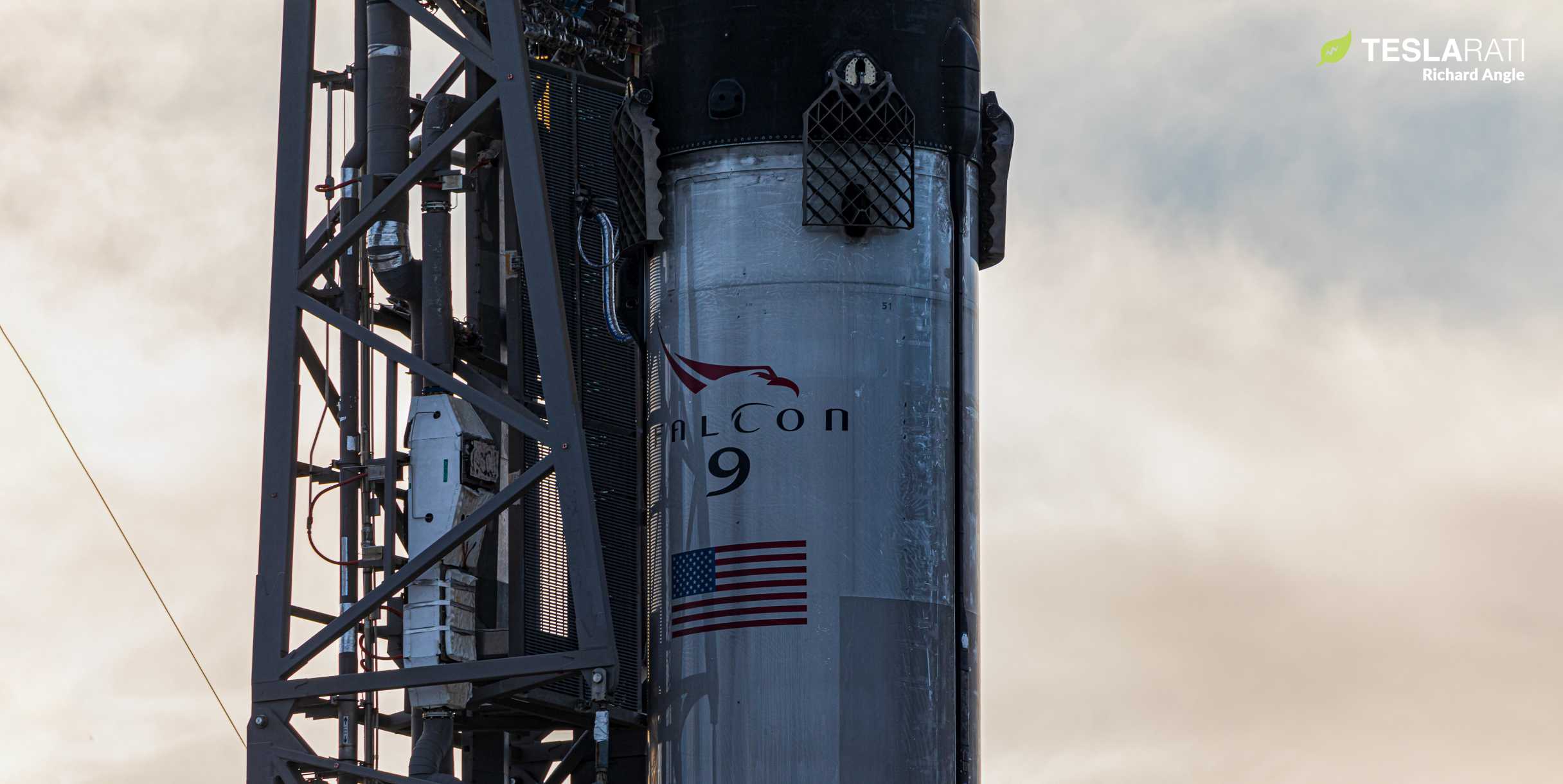
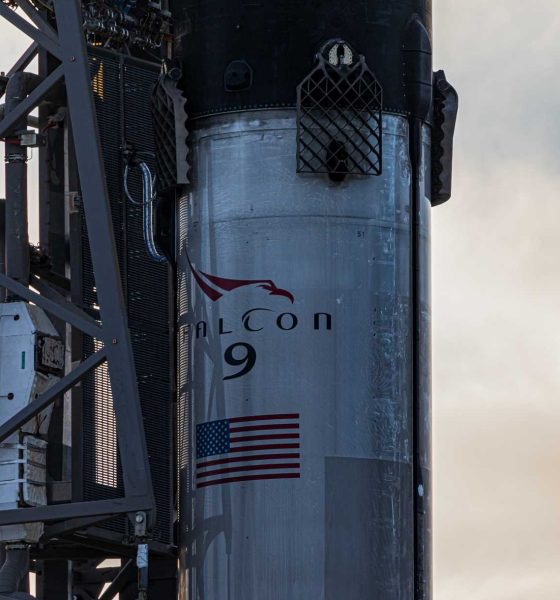
News
SpaceX set to launch 240th Starlink satellite as space internet nears prime time
SpaceX is just hours away from a Monday launch that should leave the company with almost 250 Starlink satellites in orbit — the latest in several recent steps towards prime time for the fledgling space internet constellation.
Scheduled to lift off no earlier than (NET) 9:49 am EST (14:49 UTC) on January 27th, a twice-flown Falcon 9 booster, new upper stage, 60 Starlink satellites, and a mysteriously blank payload fairing will try to thread the needle from SpaceX’s Cape Canaveral Air Force Station (CCAFS) LC-40 pad. Weather is tepid according to USAF forecasts and Monday’s – already just 50% ‘go’ – doesn’t even account for extremely high-speed upper-level winds that will absolutely have to wane before Falcon 9 can launch.
SpaceX’s fourth dedicated launch, today’s mission – known as Starlink V1 L3 (the third launch of v1.0 satellites) – will raise the number of spacecraft the company has placed in orbit to 240. Based on past statements from executives and SpaceX’s very own Starlink.com website, successfully completing Starlink V1 L3 could place the company just a hop, skip, and a jump away from the space-based internet constellation’s prime-time. With a little luck, the fledgling satellite internet provider could be serving customers much sooner than almost anyone might imagine.
As of now, it appears that SpaceX will indeed attempt to launch later today despite a good chance that weather conditions will force the company to try again on January 28th. Thankfully, SpaceX’s unique operating procedures brings with it a fair amount of flexibility to scrub launches with very little consequence less than 40 minutes before liftoff.
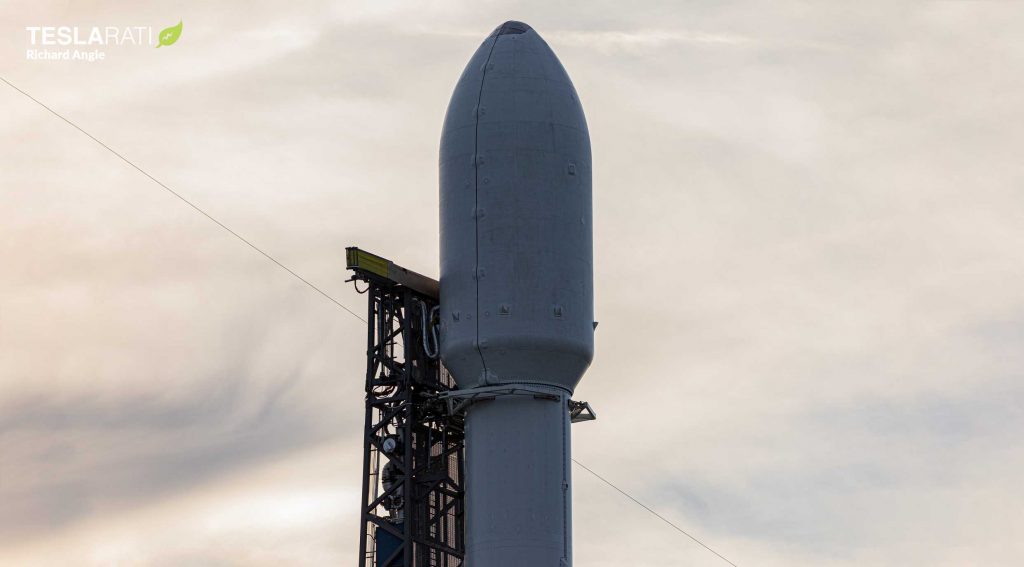
SpaceX is able to wait that long out of sheer necessity. The company introduced the use of ‘subcooled’ liquid oxygen and kerosene on its Falcon launch vehicles all the way back in 2016, encouraged by the fact that its propellant becomes significantly denser as it gets colder. By toeing the line between liquid oxygen and kerosene actually solidifying into slush, SpaceX was able to boost Falcon 9’s payload capabilities by an incredible ~30% or more. To get that benefit, however, Falcon 9’s propellant must remain as cold as possible, and it begins warming the second that it leaves its far-more-insulated storage tanks and enters Falcon 9.
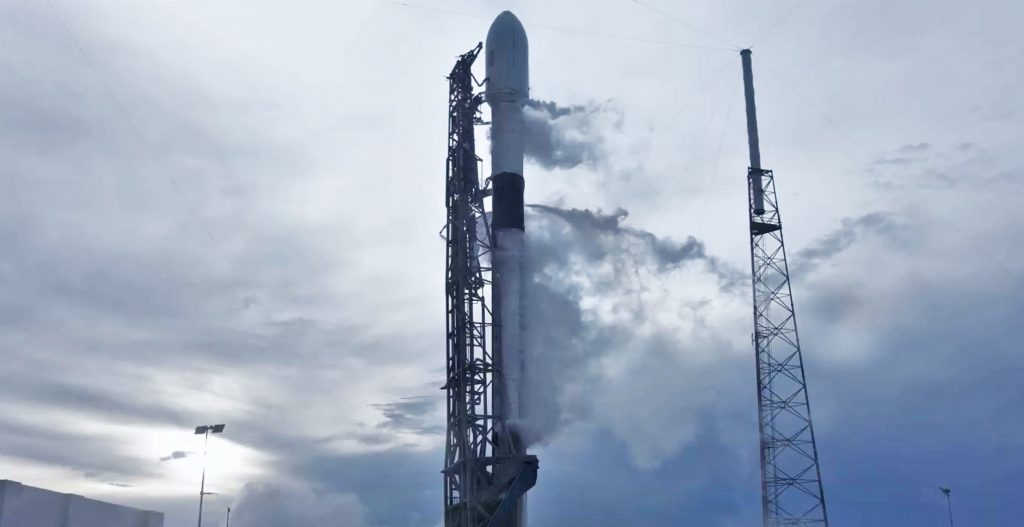
As a result, SpaceX must load Falcon 9 and Falcon Heavy with propellant as late as physically possible, translating to no sooner than 35 minutes before liftoff on all recent launches. In other words, if the weather is firmly on the ‘bad’ side of things at T-38:00-35:00, SpaceX is often able to scrub a given launch attempt before propellant loading begins, both saving the rocket from an unnecessary thermal cycle and saving propellant that might otherwise have to be wasted.
120 satellites, 20 days
Weather challenges and the likelihood of a 24-hour delay aside, SpaceX will soon launch its third batch of upgraded Starlink v1.0 satellites — also the company’s fourth dedicated launch of 60 spacecraft. If things go as planned, SpaceX will have launched nearly 250 satellites total – all but 5 (or so) of which are happily operating in Earth orbit right now.
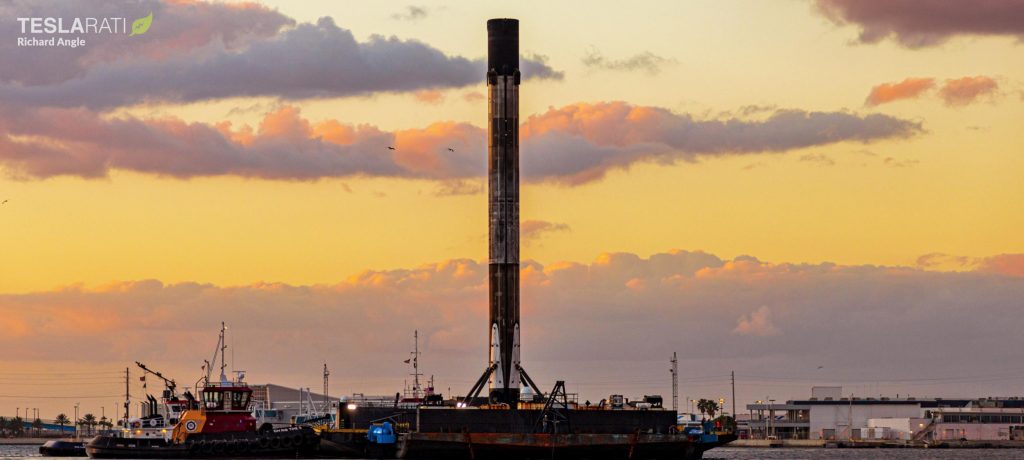
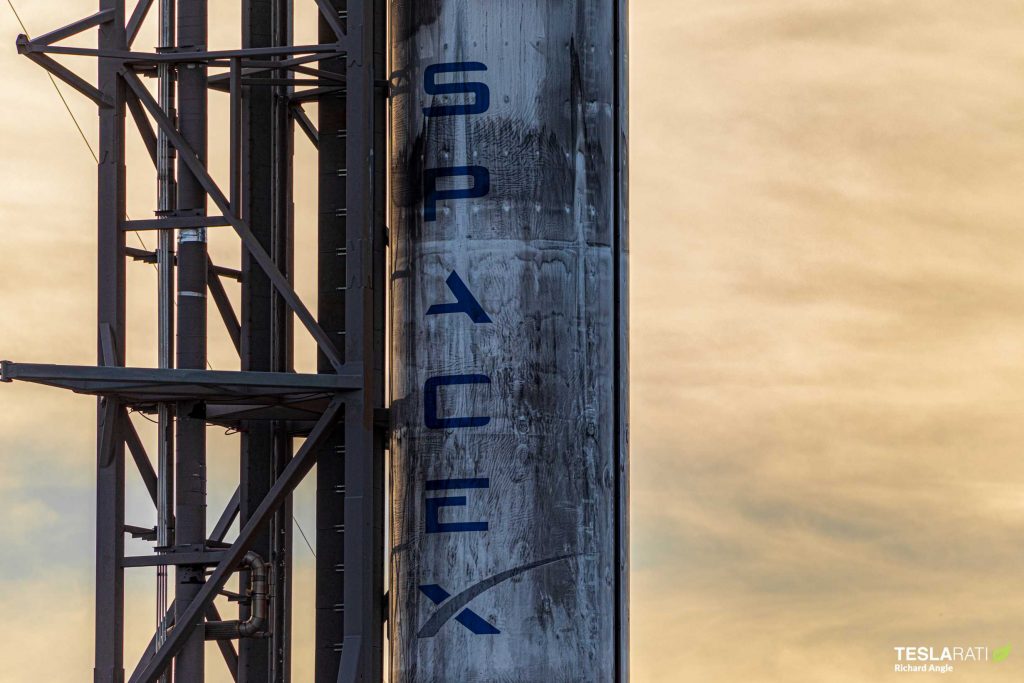
Deemed Starlink V1 L3, a successful mission later today will also mean that SpaceX has launched an incredible 120 spacecraft – weighing more than 30 metric tons – in less than 20 days. It’s difficult to say for sure, but it’s very likely that that will mark the latest global record secured by SpaceX, following on the heels of the company’s recent ascendance as the newest owner of the world’s largest private satellite constellation (~180 satellites).
However, the ultimate goal of Starlink is, of course, to deliver unprecedentedly high-performance internet service to customers anywhere on Earth. The “anywhere on Earth” modifier is likely more than 20 dedicated SpaceX launches away from reality, but the company has said it will begin serving internet to customers in “the Northern U.S. and Canada in 2020”. As of mid-2019, SpaceX indicated that that regional North American beta test could begin after just six launches.
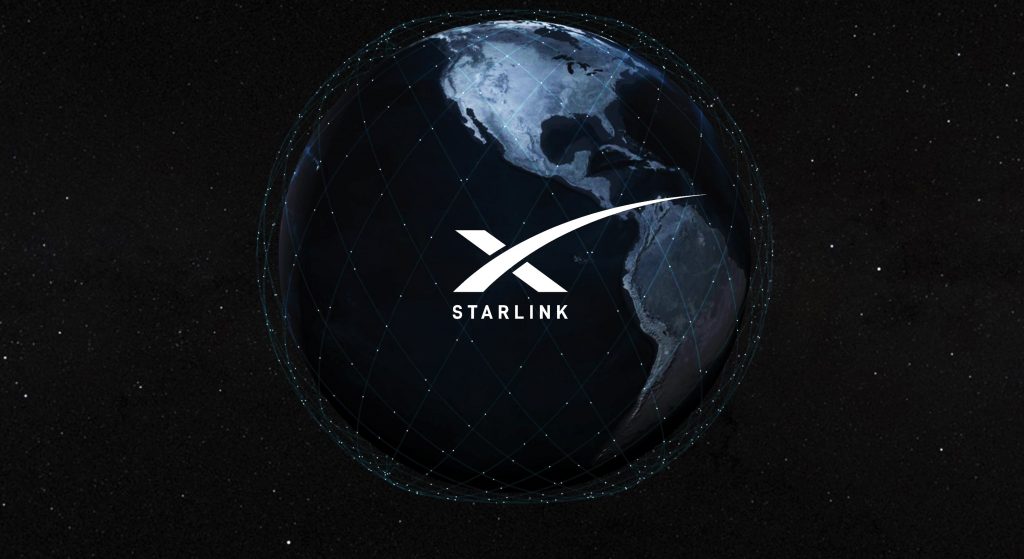
More recent comments from a SpaceX executive suggest that it could require more like 8 launches of 60 Starlink satellites before initial service can begin in North America, but that ultimately means that the company should be no less than 50-65% of the way there after Starlink V1 L3. With a little luck, that could mean that SpaceX is just two or three Starlink launches away from inviting the first non-employee customers onto the company’s space-based internet. Given SpaceX’s current launch cadence, six Starlink launches may well be well behind the company by the end of February – perhaps just a month or less from now.
Weather permitting, tune in to SpaceX.com/webcast around 9:35 am EST (14:35 UTC) later today (January 18th) to watch SpaceX’s latest Starlink launch live.
Check out Teslarati’s Marketplace! We offer Tesla accessories, including for the Tesla Cybertruck and Tesla Model 3.

Elon Musk
Elon Musk’s X will start using a Tesla-like software update strategy
The initiative seems designed to accelerate updates to the social media platform, while maintaining maximum transparency.

Elon Musk’s social media platform X will adopt a Tesla-esque approach to software updates for its algorithm.
The initiative seems designed to accelerate updates to the social media platform, while maintaining maximum transparency.
X’s updates to its updates
As per Musk in a post on X, the social media company will be making a new algorithm to determine what organic and advertising posts are recommended to users. These updates would then be repeated every four weeks.
“We will make the new 𝕏 algorithm, including all code used to determine what organic and advertising posts are recommended to users, open source in 7 days. This will be repeated every 4 weeks, with comprehensive developer notes, to help you understand what changed,” Musk wrote in his post.
The initiative somewhat mirrors Tesla’s over-the-air update model, where vehicle software is regularly refined and pushed to users with detailed release notes. This should allow users to better understand the details of X’s every update and foster a healthy feedback loop for the social media platform.
xAI and X
X, formerly Twitter, has been acquired by Elon Musk’s artificial intelligence startup, xAI last year. Since then, xAI has seen a rapid rise in valuation. Following the company’s the company’s upsized $20 billion Series E funding round, estimates now suggest that xAI is worth tens about $230 to $235 billion. That’s several times larger than Tesla when Elon Musk received his controversial 2018 CEO Performance Award.
As per xAI, the Series E funding round attracted a diverse group of investors, including Valor Equity Partners, Stepstone Group, Fidelity Management & Research Company, Qatar Investment Authority, MGX, and Baron Capital Group, among others. Strategic partners NVIDIA and Cisco Investments also continued support for building the world’s largest GPU clusters.
News
Tesla FSD Supervised wins MotorTrend’s Best Driver Assistance Award
The decision marks a notable reversal for the publication from prior years, with judges citing major real-world improvements that pushed Tesla’s latest FSD software ahead of every competing ADAS system.

Tesla’s Full Self-Driving (Supervised) system has been named the best driver-assistance technology on the market, earning top honors at the 2026 MotorTrend Best Tech Awards.
The decision marks a notable reversal for the publication from prior years, with judges citing major real-world improvements that pushed Tesla’s latest FSD software ahead of every competing ADAS system. And it wasn’t even close.
MotorTrend reverses course
MotorTrend awarded Tesla FSD (Supervised) its 2026 Best Tech Driver Assistance title after extensive testing of the latest v14 software. The publication acknowledged that it had previously criticized earlier versions of FSD for erratic behavior and near-miss incidents, ultimately favoring rivals such as GM’s Super Cruise in earlier evaluations.
According to MotorTrend, the newest iteration of FSD resolved many of those shortcomings. Testers said v14 showed far smoother behavior in complex urban scenarios, including unprotected left turns, traffic circles, emergency vehicles, and dense city streets. While the system still requires constant driver supervision, judges concluded that no other advanced driver-assistance system currently matches its breadth of capability.
Unlike rival systems that rely on combinations of cameras, radar, lidar, and mapped highways, Tesla’s FSD operates using a camera-only approach and is capable of driving on city streets, rural roads, and freeways. MotorTrend stated that pure utility, the ability to handle nearly all road types, ultimately separated FSD from competitors like Ford BlueCruise, GM Super Cruise, and BMW’s Highway Assistant.
High cost and high capability
MotorTrend also addressed FSD’s pricing, which remains significantly higher than rival systems. Tesla currently charges $8,000 for a one-time purchase or $99 per month for a subscription, compared with far lower upfront and subscription costs from other automakers. The publication noted that the premium is justified given FSD’s unmatched scope and continuous software evolution.
Safety remained a central focus of the evaluation. While testers reported collision-free operation over thousands of miles, they noted ongoing concerns around FSD’s configurable driving modes, including options that allow aggressive driving and speeds beyond posted limits. MotorTrend emphasized that, like all Level 2 systems, FSD still depends on a fully attentive human driver at all times.
Despite those caveats, the publication concluded that Tesla’s rapid software progress fundamentally reshaped the competitive landscape. For drivers seeking the most capable hands-on driver-assistance system available today, MotorTrend concluded Tesla FSD (Supervised) now stands alone at the top.
News
Elon Musk’s Grokipedia surges to 5.6M articles, almost 79% of English Wikipedia
The explosive growth marks a major milestone for the AI-powered online encyclopedia, which was launched by Elon Musk’s xAI just months ago.

Elon Musk’s Grokipedia has grown to an impressive 5,615,201 articles as of today, closing in on 79% of the English Wikipedia’s current total of 7,119,376 articles.
The explosive growth marks a major milestone for the AI-powered online encyclopedia, which was launched by Elon Musk’s xAI just months ago. Needless to say, it would only be a matter of time before Grokipedia exceeds English Wikipedia in sheer volume.
Grokipedia’s rapid growth
xAI’s vision for Grokipedia emphasizes neutrality, while Grok’s reasoning capabilities allow for fast drafting and fact-checking. When Elon Musk announced the initiative in late September 2025, he noted that Grokipedia would be an improvement to Wikipedia because it would be designed to avoid bias.
At the time, Musk noted that Grokipedia “is a necessary step towards the xAI goal of understanding the Universe.”
Grokipedia was launched in late October, and while xAI was careful to list it only as Version 0.1 at the time, the online encyclopedia immediately earned praise. Wikipedia co-founder Larry Sanger highlighted the project’s innovative approach, noting how it leverages AI to fill knowledge gaps and enable rapid updates. Netizens also observed how Grokipedia tends to present articles in a more objective manner compared to Wikipedia, which is edited by humans.
Elon Musk’s ambitious plans
With 5,615,201 total articles, Grokipedia has now grown to almost 79% of English Wikipedia’s article base. This is incredibly quick, though Grokipedia remains text-only for now. xAI, for its part, has now updated the online encyclopedia’s iteration to v0.2.
Elon Musk has shared bold ideas for Grokipedia, including sending a record of the entire knowledge base to space as part of xAI’s mission to preserve and expand human understanding. At some point, Musk stated that Grokipedia will be renamed to Encyclopedia Galactica, and it will be sent to the cosmos.
“When Grokipedia is good enough (long way to go), we will change the name to Encyclopedia Galactica. It will be an open source distillation of all knowledge, including audio, images and video. Join xAI to help build the sci-fi version of the Library of Alexandria!” Musk wrote, adding in a later post that “Copies will be etched in stone and sent to the Moon, Mars and beyond. This time, it will not be lost.”








